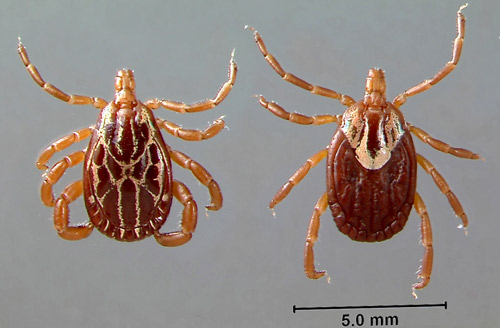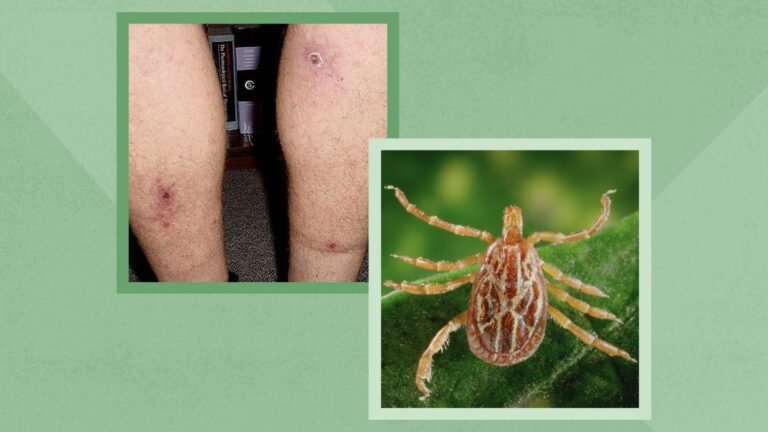Gulf coast tick and dog tick are both common species of ticks found in the united states and differ in size and preferred hosts. Ticks are tiny parasites that feed on the blood of humans and animals.
They are notorious for spreading several diseases, including Lyme disease, rocky mountain spotted fever, and tularemia. Gulf coast tick and dog tick are two common tick species found in the united states. The Gulf coast tick is found mostly in the southern and eastern parts of us, while the dog tick is prevalent throughout the country.
Gulf Coast ticks are usually smaller than dog ticks and prefer to feed on deer, horses, and cattle, while dog ticks feed on dogs and other mammals, including humans. Understanding the difference between these two tick species can help in their identification and proper treatment.

Credit: entnemdept.ufl.edu
Identification Of Ticks
Identification of different types of dog ticks and gulf coast ticks found in north america is important for pet owners. Gulf coast ticks are larger, with females measuring up to 1/2 inch and males approximately 1/4 inch. They are reddish-brown, have a hexagonal shape, and have large mouthparts.
Dog ticks come in brown or blackish-brown colors, with females reaching almost 1/2 inch in size. Their mouthparts are not as visible as gulf coast ticks. Another identifying feature of dog ticks is their large round body, which can be flattened when they are engorged with blood.
Being able to distinguish between the two types of ticks is crucial for prevention and treatment, as gulf coast ticks are known carriers of rocky mountain spotted fever and canine hepatozoonosis.
Health Risks Associated With Gulf Coast Tick And Dog Tick
Tick-borne illnesses can be debilitating and even life-threatening. Both the gulf coast tick and dog tick are known to transmit diseases to humans and animals. The gulf coast tick is a major carrier of rocky mountain spotted fever, while the dog tick transmits Lyme disease and rocky mountain spotted fever as well.
Ticks transmit diseases through their bites, which can cause fever, muscle aches, and sometimes paralysis. To prevent tick-borne illnesses, it is important to stay vigilant, especially during peak tick season. Wear protective clothing, use insect repellents, and do a thorough tick check after being outdoors. Early detection of tick bites and prompt medical treatment can help prevent the transmission of tick-borne diseases.
Gulf Coast Tick
The gulf coast tick is a type of tick found primarily in the southeastern united states. Their habitat consists of wooded and bushy areas, where they can thrive in warm and humid conditions. These ticks are particularly prevalent in the gulf coast region, where they are known to feed on both animals and humans.
The life cycle of the gulf coast tick consists of four stages: egg, larva, nymph, and adult. They are known to have a wide range of hosts, including domesticated and wild animals, as well as people. To protect against gulf coast tick bites on pets and humans, it is important to use tick repellents, check for ticks after spending time outdoors, and keep grass and shrubs trimmed. With proper prevention, it is possible to reduce the risk of tick-borne illnesses transmitted by the gulf coast tick.
Dog Tick
Dog ticks are commonly found in warmer regions, and their habitats include grassy areas, bushes, and wooded areas. They can live for up to three years, and their life cycle consists of four stages: egg, larvae, nymph, and adult. These ticks feed on several host animals, including dogs, humans, and other mammals.
To prevent bites, pet owners must regularly check their pets for ticks, avoid letting them wander through the woods, and use tick-repellent products. Humans should also be aware of the potential risks and take measures such as wearing protective clothing and using repellent sprays when entering areas where ticks are found. It’s important to act fast if you find a tick on your pet or yourself to avoid transmission of diseases that can be potentially dangerous.
Risk Assessment Of Gulf Coast Tick And Dog Tick
Tick bites can pose significant risks to both pets and humans. Gulf Coast ticks and dog ticks are the two most common ticks found in the united states. While both can transmit diseases, gulf coast ticks are considered more dangerous due to the various diseases they carry, including human monocytic ehrlichiosis and the Bourbon virus.
On the other hand, dog ticks are known to transmit rocky mountain spotted fever. It’s important to take precautions to prevent tick bites from both types of ticks, but if you live in gulf coast regions or will be traveling there, it’s important to keep a closer eye on gulf coast ticks. Be sure to check for ticks after spending time outside and seek medical attention if you develop any symptoms after a tick bite.
Frequently Asked Questions Of Gulf Coast Tick Vs Dog Tick
What Is The Difference Between Gulf Coast Tick And Dog Tick?
Gulf Coast tick and dog tick are two different types of ticks that can be found on dogs. The Gulf coast ticks are brown, while the dog tick has a reddish-brown color. Gulf coast ticks are more commonly found in the southern us, and they are more difficult to eradicate. Dog ticks, on the other hand, can be found all over the world and are easier to control.
Can Gulf Coast Ticks Transmit Diseases To Dogs?
Yes, gulf coast ticks can transmit diseases like rocky mountain spotted fever, ehrlichiosis, and anaplasmosis to dogs. These diseases can cause a wide range of symptoms, including fever, lethargy, and loss of appetite. The best way to protect your dog from gulf coast ticks is to use tick-preventative measures and do regular tick checks.
How Can You Prevent Ticks From Infesting Your Dog?
To prevent ticks from infesting your dog, you can use a tick preventative, such as a tick collar, topical solution, or oral medication. Additionally, you can avoid areas that are known to have high tick populations, check your dog for ticks regularly, and be vigilant in checking your home and yard for ticks.
How Can I Safely Remove A Tick From My Dog?
To safely remove a tick from your dog, use tweezers to grasp the tick as close to your dog’s skin. Avoid twisting or jerking the tick, which can cause the mouthparts to break off and stay in the skin. After removing the tick, clean the bite area with rubbing alcohol or soap and water.
Can Tick Bites Cause Lyme Disease?
Tick bites can transmit Lyme disease to humans and dogs. Lyme disease is caused by the bacterium Borrelia burgdorferi and can cause fever, joint pain, and lethargy. If you suspect your dog has been bitten by a tick, check for symptoms of Lyme disease and consult with your veterinarian about treatment options.
Conclusion
Ticks are a serious problem for both pets and humans. Gulf Coast tick and dog tick are two common species that haunt the Gulf coast. They have several differences in terms of their habitat, life cycle, and the diseases they can transmit.
Gulf coast ticks are more aggressive and can transmit a variety of diseases to both animals and humans. They mainly live in the woods and their activity peaks between June and August. Dog ticks, on the other hand, are less aggressive and are limited to transmitting a few diseases.
They can be found in almost all habitats, and their activity peak is in the spring. It is essential to take preventive measures to avoid tick bites, especially in areas where these ticks are common. Being aware and informed about tick infestations can go a long way in ensuring a tick-free environment.



